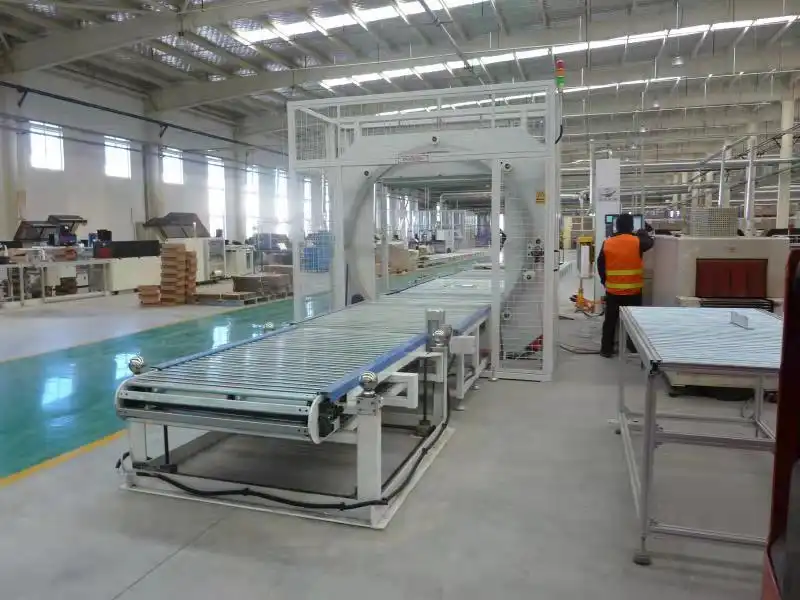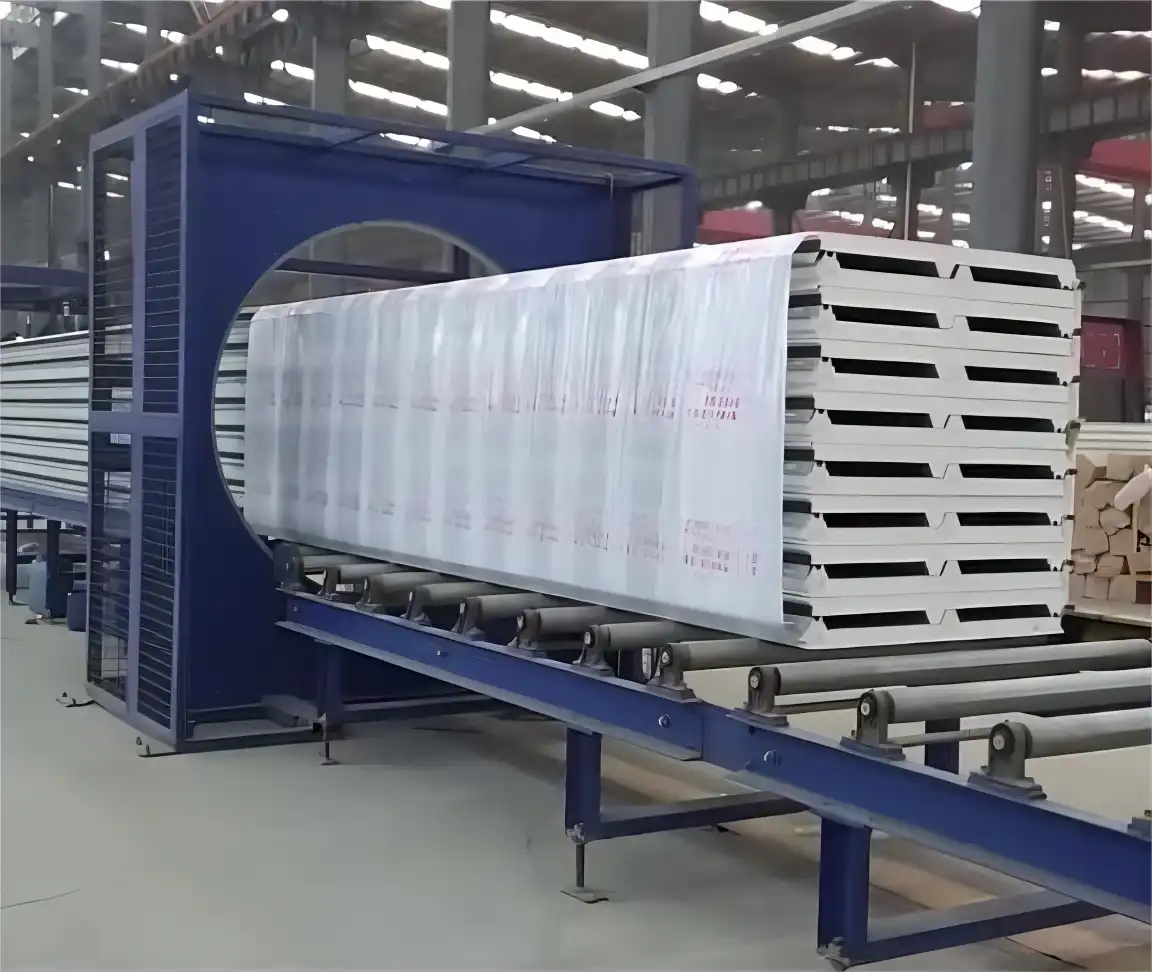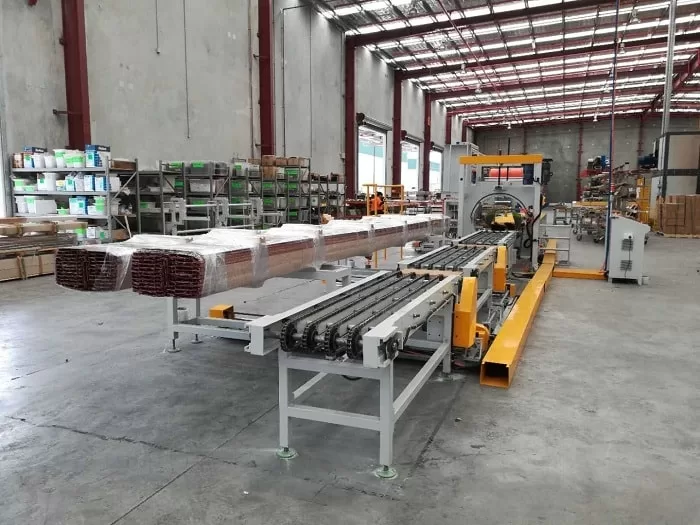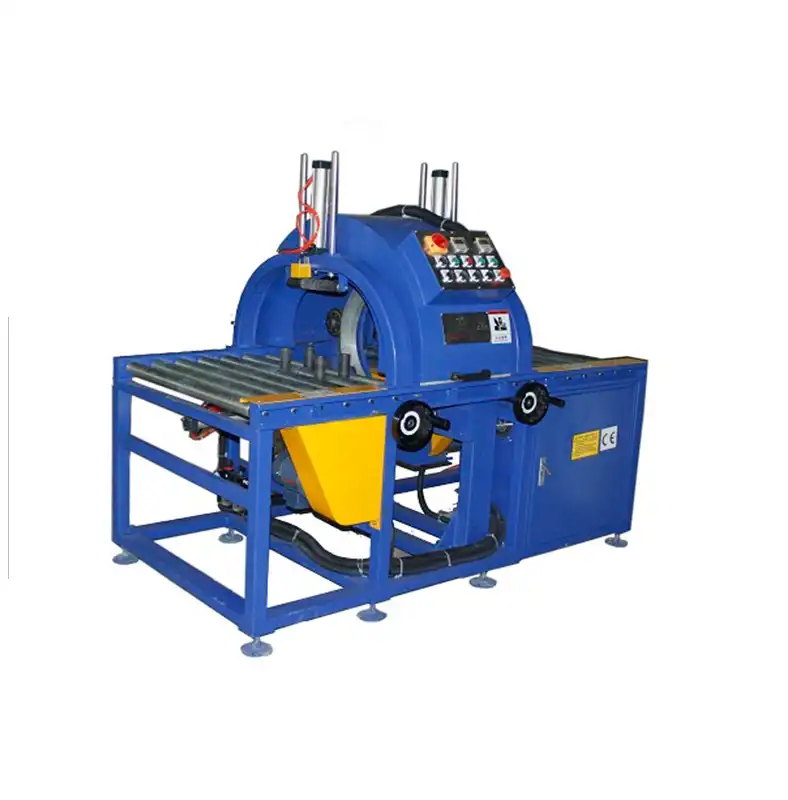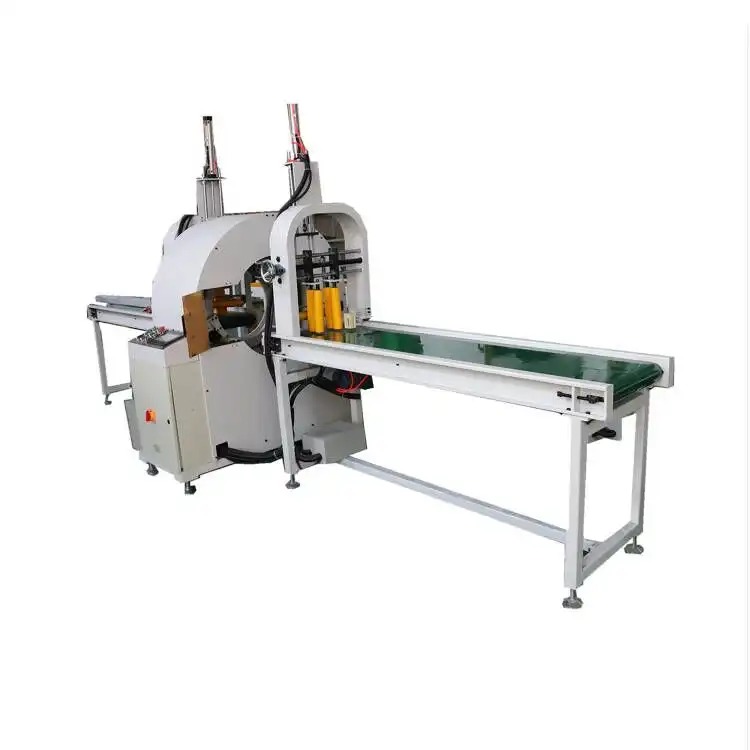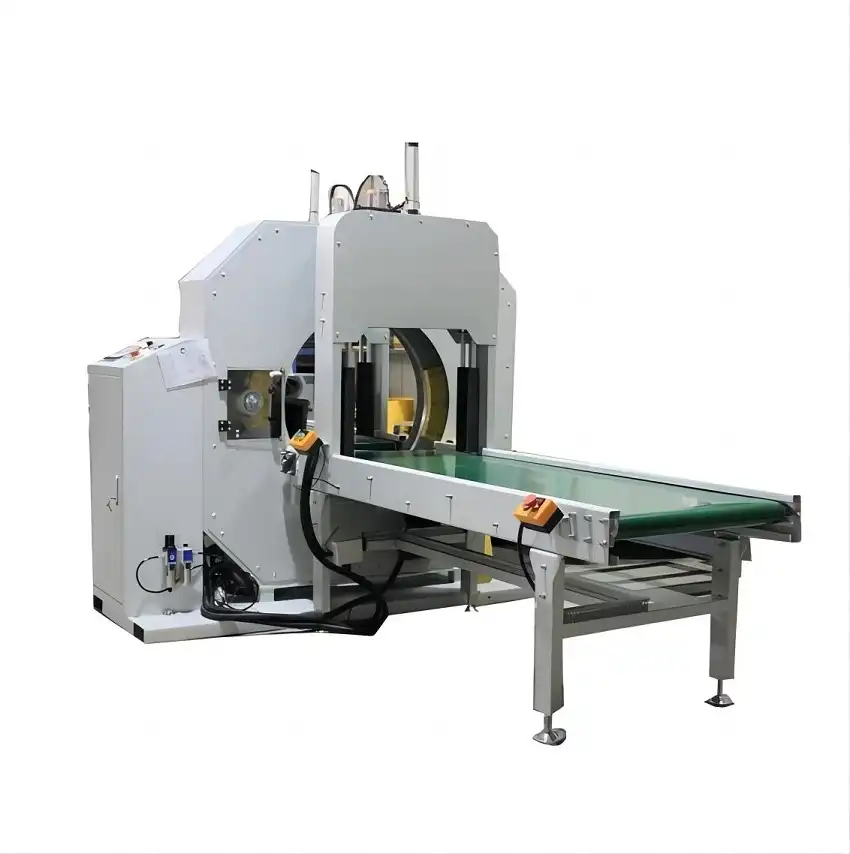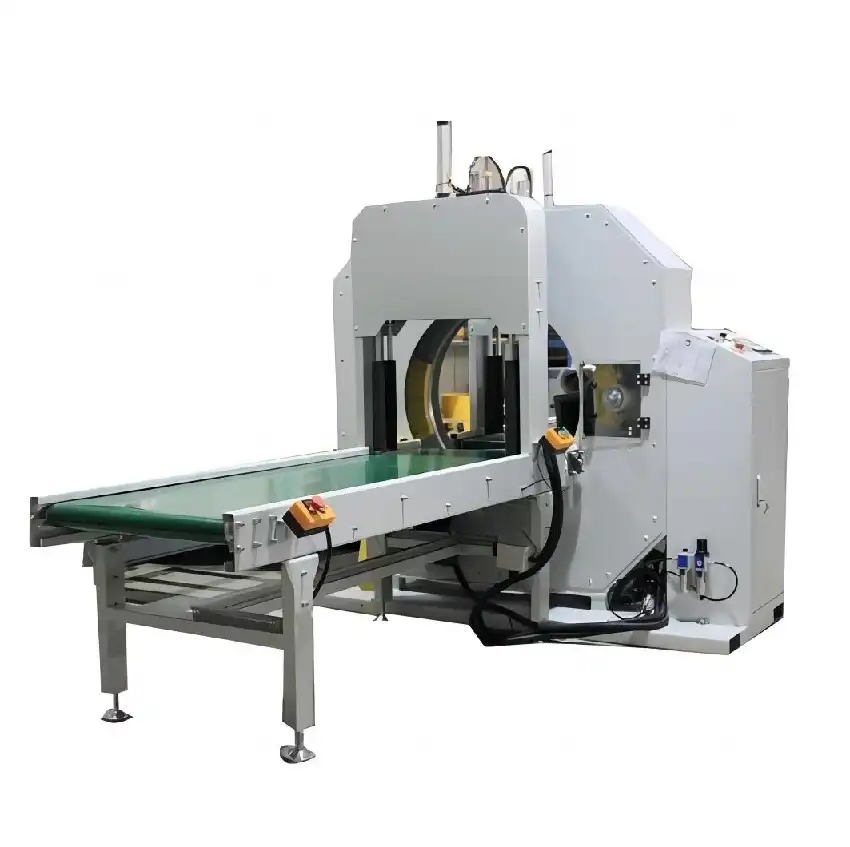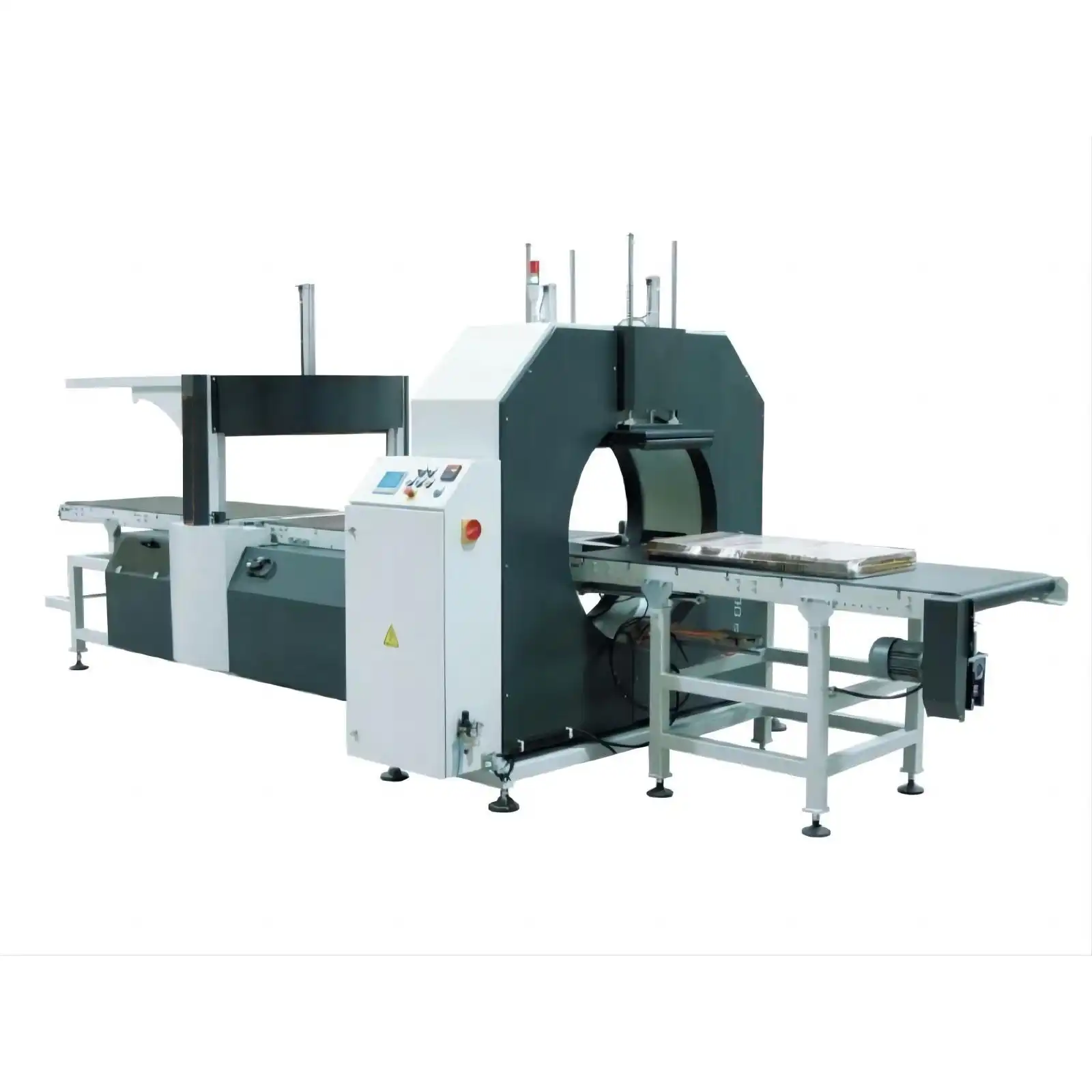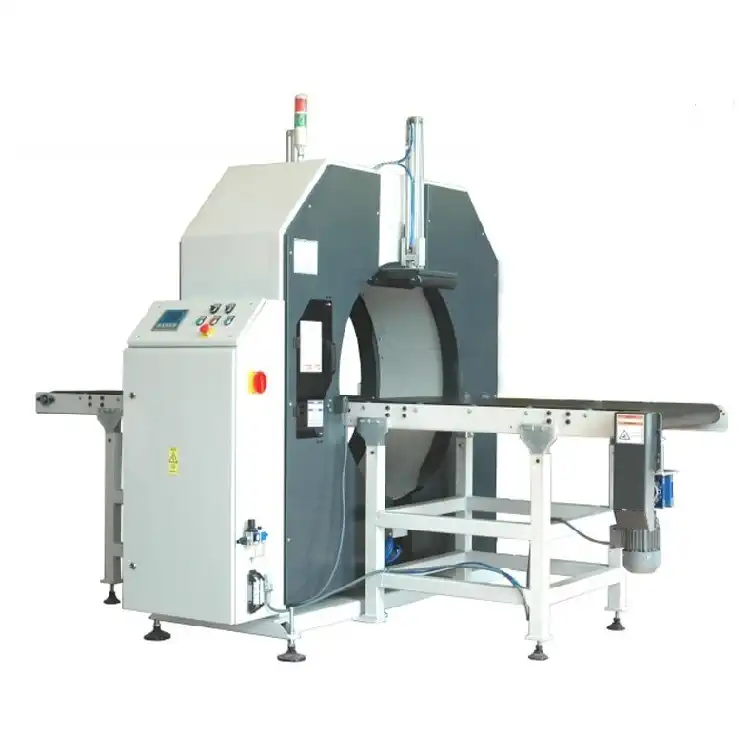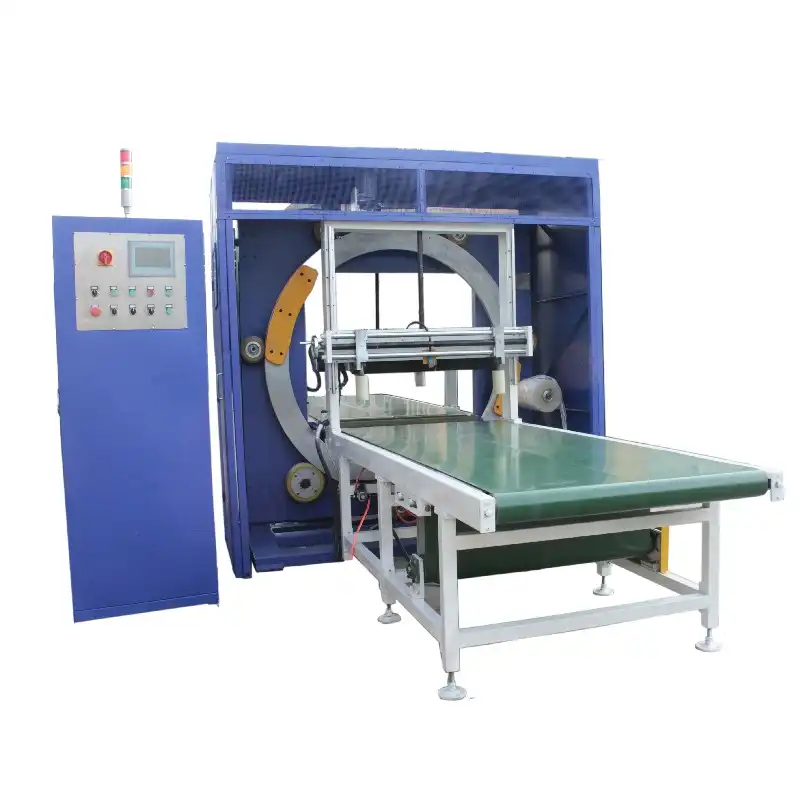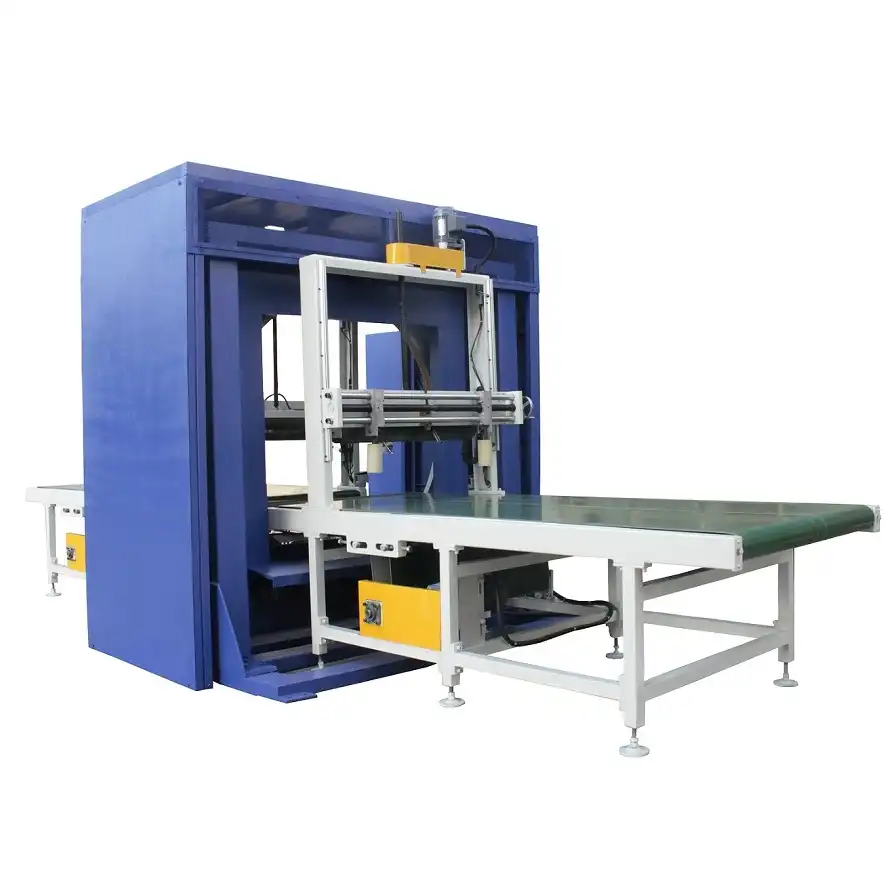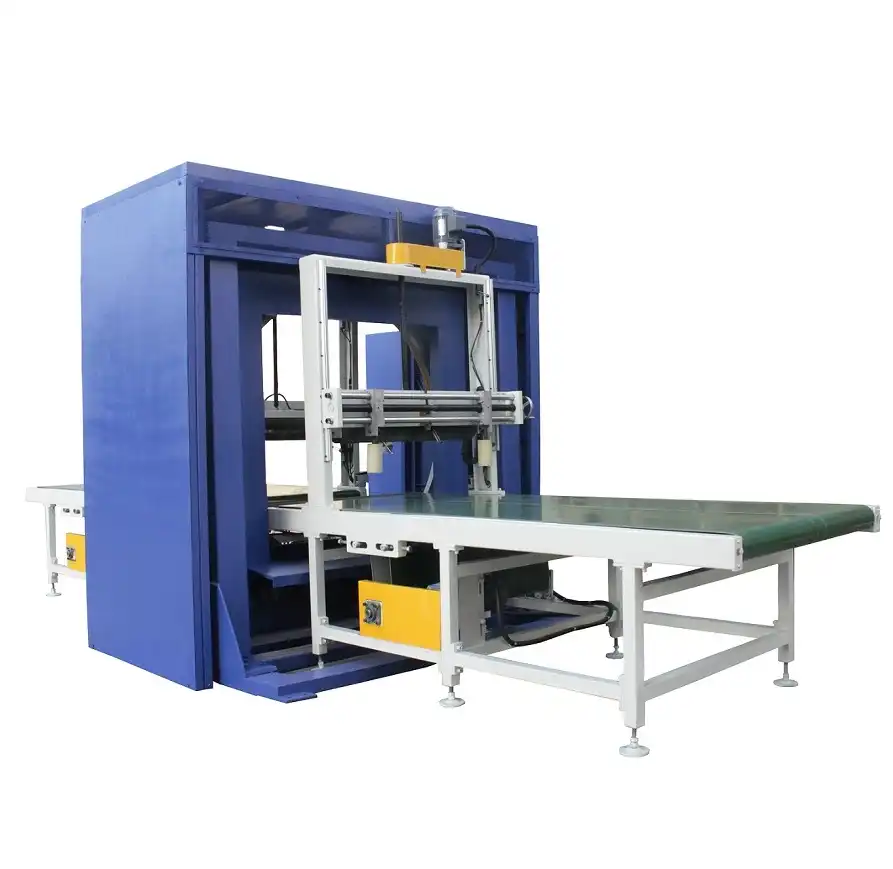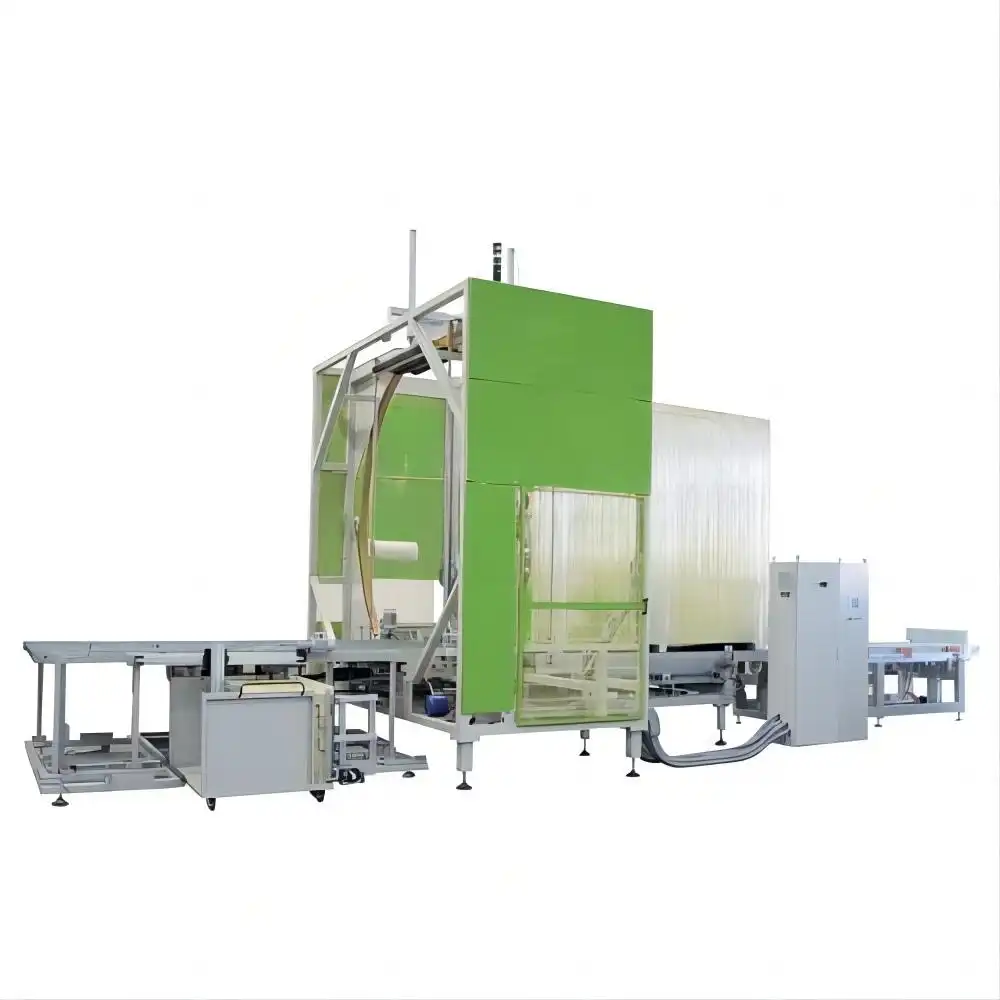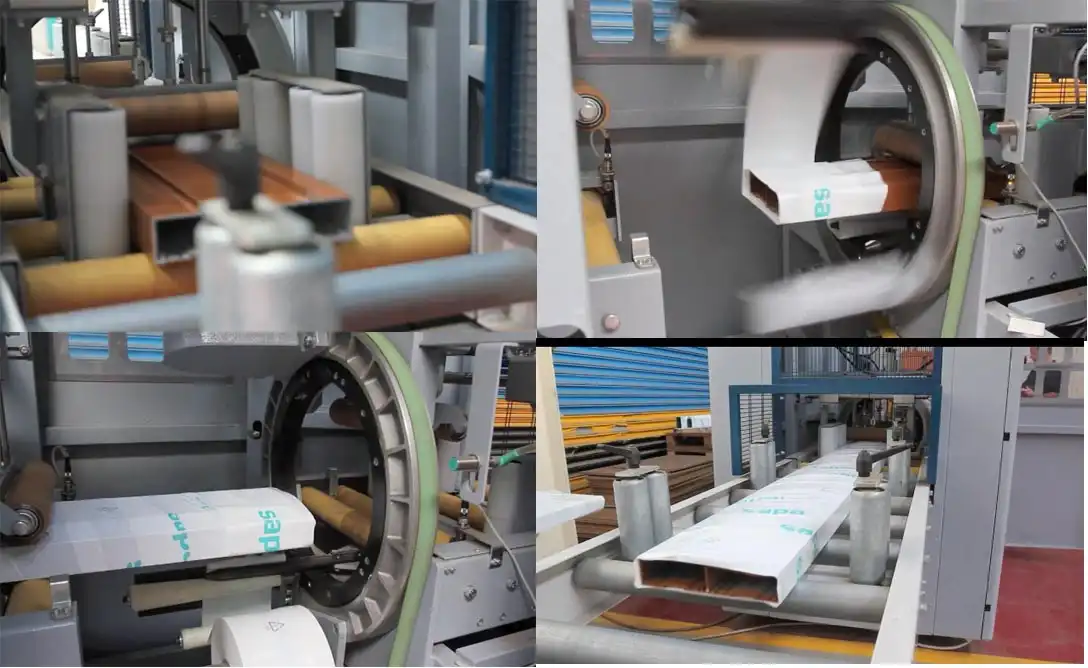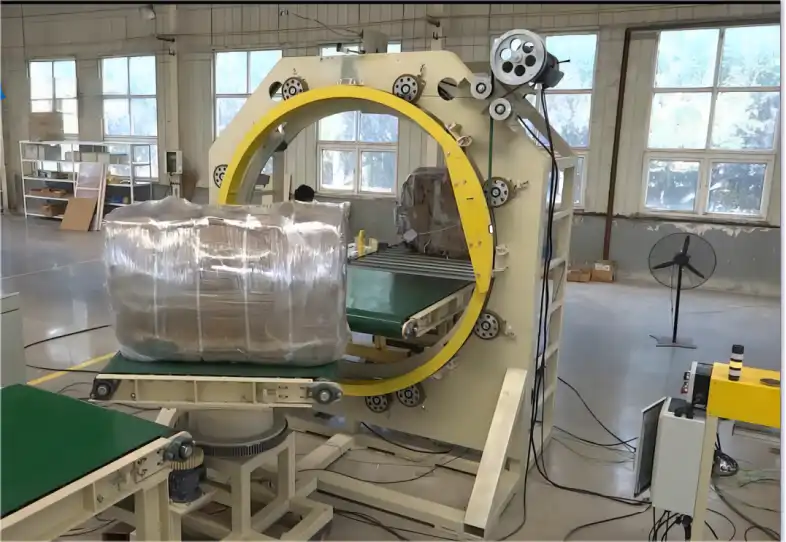Internal Decision-Making Guide for Selecting an Orbital Wrapper
In today's manufacturing and logistics sectors, orbital wrapping machines have become essential tools for improving efficiency, reducing labor costs, and ensuring that products are securely packaged for transportation. As companies grow and operations become more complex, the decision to invest in an orbital wrapper often arises. However, selecting the right machine requires careful consideration of various factors to ensure that the solution aligns with both the current and future needs of the business.
This internal decision-making guide will walk through the essential steps to help your team make an informed decision when choosing the right orbital wrapper for your operations.
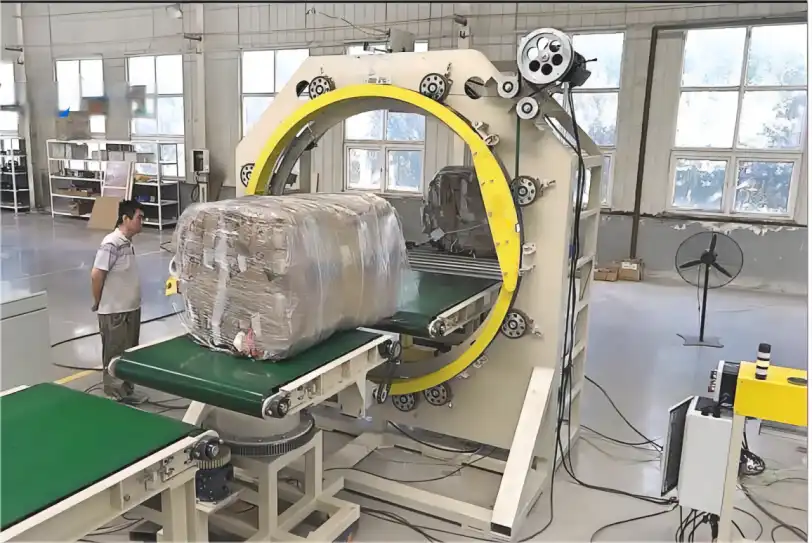
1. Understanding the Role of an Orbital Wrapper in Your Business
The first step in selecting an orbital wrapper is understanding its role in your specific industry or operational context. Orbital wrapping machines are designed to apply stretch film or other materials around a product by rotating around it horizontally. This type of packaging ensures that goods are tightly secured, offering protection from moisture, dust, and damage during shipping.
Before diving into the technical specifications of different machines, it’s crucial to define what the orbital wrapper will do in your business. Will it be used to secure long or irregularly shaped products like pipes, boards, or furniture? Or will it be used in a high-volume production environment where speed and automation are critical? Understanding these core uses will lay the groundwork for evaluating machine options.
2. Identifying Core Requirements Based on Product Specifications
Once the role of the machine is clear, it’s important to align the decision with the core product specifications that the wrapper will handle. Different products will have varying wrapping needs depending on their size, shape, and material.
Consider the following factors when analyzing your products:
-
Product dimensions: What are the length, width, and height of the products that need wrapping? Are they uniform or do they vary?
-
Weight: Will the orbital wrapper need to accommodate heavy or light products?
-
Fragility: Are the products delicate and require soft handling, or are they robust and resilient to the pressure applied by the wrapping process?
Understanding these specifications ensures that you select a machine capable of handling your products efficiently without compromising the quality of the wrapping.
3. Evaluating Machine Speed and Throughput Capabilities
In the decision-making process, the speed and throughput of the machine should not be overlooked. This is particularly important if your company deals with high-volume production or operates under tight delivery schedules. Orbital wrappers vary in speed, depending on the model and the level of automation.
To assess this, consider:
-
Cycles per minute: How many products can be wrapped in a minute? Machines with higher throughput are suitable for operations that handle large volumes.
-
Downtime: How often will the machine require maintenance or refills of wrapping material? High-speed machines may reduce downtime, but they may also demand more frequent maintenance.
Ultimately, the goal is to balance speed with reliability to ensure that your packaging line can meet production targets without experiencing frequent stoppages.
4. Considering Automation vs. Manual Operations
Another critical factor in selecting an orbital wrapper is determining the level of automation required for your operations. While fully automated orbital wrappers are equipped with advanced features like automatic product loading, wrapping, and unloading, semi-automatic machines require more human intervention.
Fully automated machines are ideal for large-scale operations where reducing labor costs and minimizing human error are key priorities. These machines can handle multiple tasks, often integrating with existing production lines and conveyor systems, ensuring seamless operation.
On the other hand, semi-automatic orbital wrappers may be more cost-effective for smaller businesses or companies with lower production volumes. They require operators to load and unload products manually but still offer substantial time savings compared to fully manual processes.
The decision here depends on your budget, workforce availability, and the desired level of efficiency in the packaging process.
5. Assessing Durability and Build Quality
Durability is another essential aspect to consider when selecting an orbital wrapper. The longevity of the machine can have a significant impact on the total cost of ownership, particularly in environments where the machine will be used frequently or continuously.
Look for machines made from high-quality materials, such as heavy-duty steel frames, and those designed to withstand wear and tear over extended periods. Machines that are built to industrial standards often come with warranties and longer life spans, reducing the need for frequent repairs or replacements.
6. Energy Efficiency and Environmental Considerations
In today’s climate-conscious world, energy efficiency is a factor that should not be overlooked. Some orbital wrappers are designed to use minimal power while still operating at high efficiency. This reduces energy costs and makes your operation more environmentally sustainable.
Look for machines with energy-saving features like:
-
Variable speed drives: These allow the machine to adjust its energy consumption based on the wrapping speed and load size.
-
Energy-efficient motors: Machines equipped with modern, low-energy motors will contribute to overall savings on electricity consumption.
Additionally, consider the materials used in the wrapping process. Opting for eco-friendly wrapping materials can further enhance your company's commitment to sustainability.
7. Analyzing Safety Features
Worker safety is a critical concern in any manufacturing or logistics environment. Orbital wrappers come with various safety features designed to minimize accidents and protect operators.
When evaluating safety, consider:
-
Emergency stop functions: These should be easily accessible in case of malfunctions.
-
Safety sensors: Some machines come with sensors that detect human presence and stop operation if someone enters the working zone.
-
Protective guarding: Look for machines with enclosures or guards that prevent operators from coming into contact with moving parts.
Implementing a machine with robust safety features can help reduce workplace injuries and downtime due to accidents.
8. Budget Considerations: Initial Investment vs. Long-Term ROI
Cost is a significant factor in any capital equipment purchase, and an orbital wrapper is no exception. However, when considering the initial investment, it's essential to also factor in the long-term return on investment (ROI).
While more expensive machines with advanced features may seem costly upfront, they often provide greater benefits in the long run, including:
-
Lower labor costs: Automated machines reduce the need for manual labor, leading to long-term savings.
-
Increased throughput: Higher efficiency machines can boost production output, allowing you to handle more orders in less time.
-
Lower maintenance costs: High-quality, durable machines typically require fewer repairs and replacements.
On the other hand, businesses with smaller budgets might opt for semi-automatic or entry-level models that offer essential features without the advanced automation. These machines still provide significant time savings and reduce manual labor but at a lower cost. The key is to balance your initial budget with the machine’s long-term benefits.
9. Manufacturer Reputation and After-Sales Support
When selecting an orbital wrapper, it’s important to consider the reputation of the manufacturer and the quality of their after-sales support. A reputable manufacturer not only provides high-quality machines but also ensures that your operation continues to run smoothly after the sale.
Some key points to consider include:
-
Warranty terms: Look for manufacturers that offer comprehensive warranties covering parts and labor.
-
Technical support: Choose a provider that offers prompt and reliable technical assistance, either through phone support, online resources, or on-site visits.
-
Availability of spare parts: Ensure that replacement parts are readily available for your machine to minimize downtime in the event of a breakdown.
Partnering with a trusted manufacturer can provide peace of mind and reduce the risk of operational disruptions.
10. Customization Options for Specialized Needs
Not all orbital wrappers are created equal, and some businesses may require customized solutions to meet their specific packaging needs. This is especially important for companies dealing with unique or oversized products, irregular shapes, or those looking to integrate the wrapper into an existing production line.
Many manufacturers offer customization options, such as:
-
Adjustable wrapping programs: Tailor the wrapping speed, film tension, and rotation settings to accommodate different products.
-
Custom conveyor systems: If your packaging line includes product transfers, you may need customized conveyors that fit seamlessly with the wrapper.
-
Specialized film dispensers: Some machines can be equipped with dispensers for different wrapping materials, such as netting, paper, or plastic.
Investing in a machine with customizable features ensures that it can adapt to your evolving business needs and product specifications.
11. Comparing Different Models: Pros and Cons
When selecting an orbital wrapper, it's important to compare different models to understand the pros and cons of each. This will help you narrow down your choices and find a machine that aligns with your operational goals.
For example:
-
Entry-level models: These are often less expensive and provide basic wrapping capabilities. However, they may lack advanced features such as automation or adjustable wrapping settings.
-
Mid-range models: These machines often offer a good balance between cost and functionality. They may include some automation features and offer higher throughput than entry-level models, but at a lower price than fully automated machines.
-
High-end models: These are ideal for high-volume operations that require minimal human intervention. While these machines come with a higher price tag, their advanced features (such as automatic film application, speed control, and integrated safety sensors) provide substantial long-term benefits.
By comparing different models, you can make a more informed decision and select a machine that delivers the best value for your investment.
12. Preparing for Future Growth: Scalability and Integration
Another critical factor to consider is how well the orbital wrapper will scale with your business growth. If your operation is expected to expand, selecting a machine that can accommodate larger volumes or more complex packaging requirements is essential.
To prepare for future growth, consider:
-
Modular design: Some orbital wrappers are designed to be modular, meaning they can be expanded with additional components or upgraded to handle higher volumes.
-
Integration with existing systems: If you plan to integrate the wrapper with other equipment, such as conveyors or robotic arms, ensure that the machine is compatible with your current and future systems.
-
Software upgrades: Some machines come with advanced control systems that can be upgraded as new technology becomes available, allowing you to maintain cutting-edge efficiency.
By choosing a machine with scalability in mind, you ensure that your investment will continue to deliver value as your business grows.
Conclusion: Making the Right Choice for Your Business
Choosing the right orbital wrapper for your business is a decision that requires careful analysis and planning. By understanding your specific operational needs, evaluating the features of different machines, and considering factors like automation, safety, and scalability, you can select a machine that delivers long-term value.
A well-chosen orbital wrapper not only streamlines your packaging processes but also contributes to improved product protection, reduced labor costs, and enhanced operational efficiency. By following this guide and considering each factor carefully, your team will be well-equipped to make an informed decision that supports both your current and future business goals.
In the end, the right orbital wrapper is not just a purchase; it’s an investment in the future efficiency and success of your operations. Ensure that you weigh each factor carefully, and make a choice that delivers maximum benefits over the long term.

